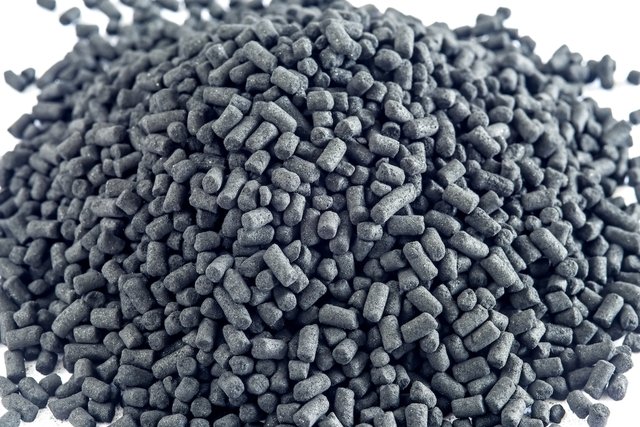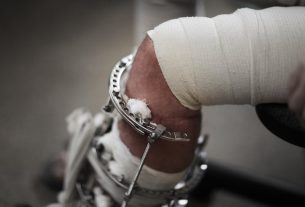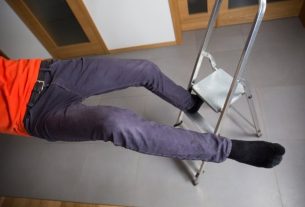Chumbinho is a dark gray granular substance that contains aldicarb and other insecticides. Chumbinho has no smell or taste and is therefore often used as a poison to kill rats. Although it can be purchased illegally, its use is prohibited in Brazil and other countries, because it is not safe as a rodenticide and has a high possibility of poisoning people.
The symptoms of pellet poisoning are dizziness, vomiting, excessive sweating, tremors and bleeding, and you should call SAMU on number 192, explaining where you are and how the person who touched or ingested the substance is.
If the victim is not breathing or if their heart is not beating, cardiac massage should be performed. However, mouth-to-mouth resuscitation should not be performed, as, if the poisoning has occurred through ingestion, there is a risk that the person providing assistance will also become intoxicated.

Symptoms of pellet poisoning
The main symptoms of pellet poisoning are:
- Nausea or vomiting;
- Increased salivation and sweating;
- Pupil contraction in the eyes;
- Abdominal pain or diarrhea that may contain blood;
- Tremors;
- Difficulty breathing;
- Pale or purplish lips, or cold skin;
- Slow heartbeat;
- Somnolence;
- Mental confusion, hallucinations and delusions.
In addition, other signs and symptoms of pellet poisoning include pellet residue on the person’s hands or mouth, different breath than usual, burning in the mouth, throat or stomach or headache.
Symptoms of pellet poisoning take around 1 hour to appear and in more serious cases paralysis of part of the body or complete inability to move, convulsions or coma may occur.
If poisoning is suspected, the victim should be taken to the hospital as quickly as possible, and call the Poison Hotline on 0800-722-600.
How the pellet acts in the body
The pellet acts by inhibiting a very important enzyme for the nervous system, essential for life and known as “acetylcholinesterase”. This enzyme, when inhibited, increases the amount of acetylcholine in the nervous system, causing a cholinergic syndrome, characterized by increased secretion production, narrowing of the bronchi and muscle paralysis, resulting in symptoms.
What to do in case of pellet poisoning
In case of suspicion or ingestion of pellets, it is advised to immediately call SAMU, dialing number 192, to ask for help or take the victim immediately to the hospital.
If the person is not responding or breathing
When it is observed that the person is not responding or breathing, it is a sign that they are going into cardiorespiratory arrest, which can lead to death within a few minutes.
In these situations, it is recommended to call medical help and start cardiac massage, which should be done as follows:
- Lay the person on their back and on a hard surface, such as the floor or a table;
- Place your hands on the victim’s chestwith palms facing down and fingers interlaced, at the midpoint of the line between the nipples;
- Push your hands tightly against your chest (compression), using your own body weight and keeping your arms straight, counting at least 2 pushes per second. The massage must be continued until the medical team arrives and it is important to allow the chest to return to its normal position between each compression.
The victim may not wake up even when receiving cardiac massage correctly, however, one should not give up until the ambulance or firefighters arrive to try to save the victim’s life. Check out how to do cardiac massage correctly.
At the hospital, if pellet poisoning is confirmed, the medical team can perform gastric lavage, use serum to eliminate the poison from the body more quickly, and medicines against hemorrhage, convulsions and activated charcoal to prevent the absorption of toxic substances that are still present. in the stomach.
What not to do
In case of suspected pellet poisoning, it is not recommended to offer water, juice or any liquid or food for the person to ingest. Furthermore, you should also not try to induce vomiting by placing your finger down the victim’s throat.
For your own protection, you should also avoid giving the victim mouth-to-mouth resuscitation, as this can cause poisoning in those doing the rescue.
Bibliography
- LOT, EL; JONES, EB IN: STATPEARLS (INTERNET). TREASURE ISLAND (FL): STATPEARLS PUBLISHING. Cholinergic Toxicity. 2022. Available at: <https://www.ncbi.nlm.nih.gov/books/NBK539783/>. Accessed on May 29, 2023
- INFORMATION AND TOXICOLOGICAL ASSISTANCE CENTER OF HOSPITAL INSTITUTO DOUTOR JOSÉ FROTA/IJF- CITY HALL OF FORTALEZA. Acute poisoning: practical guide to treatment. 2017. Available at: <https://saude.fortaleza.ce.gov.br/images/Manuais_saude/Guia_IJF_Intoxicacoes.pdf>. Accessed on February 25, 2020
- SILVA, Ana Carolina Sousa et. to the.. Exogenous poisoning by “chumbinho” as a form of self-extermination in the State of Goiás, 2003 – 20071. Rev. Eletr. Nurse Vol.12. 4.ed; 686-691, 2010
- PARANÁ. Guidelines regarding irregular rodenticides. 2018. Available at: <http://www.saude.pr.gov.br/arquivos/File/NT092018raticidasirregulares.pdf>. Accessed on February 25, 2020




